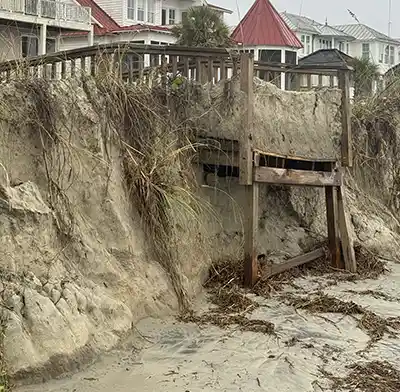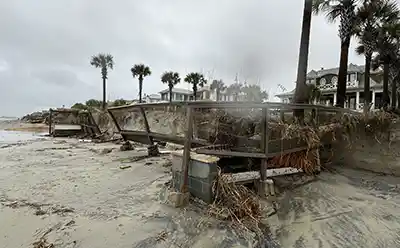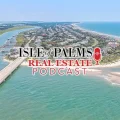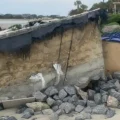
On the western side of Isle of Palms, the farthest end of Ocean Boulevard nearest Breach Inlet, stands a recently built concrete slab that has been described as a seawall, an erosion control structure and an erosion control device. It sits on private property, but its presence on the beach raises questions of whether it is in violation of state and local law.

Officials with the South Carolina Department of Health and Environmental Control’s (DHEC) Ocean and Coastal Resource Management (OCRM) must determine if the device is contributing to further erosion and if the structure’s exact location matches up to current setback requirements for private coastal property.
“This structure violates an IOP city Onordinance,” said Steven Traynum, president of Coastal Science & Engineering in Columbia, and coastal engineer consultant for IOP. “It was built landward of the setback line, which IOP city regulations do not allow. I don’t see any way for the property owner to get around these violations.”
Mayor Phillip Pounds and city Councilman Blair Hahn added that while jurisdiction in this matter now rests solely with OCRM, the act of a private property resident building the structure is the most pressing concern.
“The property owner is claiming a constitutional right to build the structure – that he is protecting his property rights, and that these rights are more important than the public right to the beach,” Hahn said. “The Coastal Conservation League (CCL) is aware of the situation as well and will be involved.”

OCRM first became aware of the issue on Oct. 4, 2023. Staff conducted inspections at the site of the property. During the inspection, OCRM officials confirmed that approximately 1,255 square feet of non-beach compatible fill and other materials – including clay, gravel/rock, artificial turf, metal fencing, filter fabric, geogrid and timber – had been placed on an active beach’s critical area without authorization from DHEC. OCRM officials further found evidence of marine debris, resulting from tidal and wave interaction with the non-beach-compatible fill and materials.
“We have heard reports from citizens of an erosion control device being found on the property,” said Emily Cedzo, director of conservation programs & policy with CCL. “We are not sure whether this was built in addition to the above referenced materials or if these materials have hardened to form some sort of erosion control device.”
New erosion control devices are explicitly prohibited on state beaches as well as by the City of Isle of Palms. The primary reason for their prohibition, according to the South Carolina General Assembly, is because armoring devices perpetuate a false sense of security to beachfront property owners. In many instances, they increase vulnerability of beachfront property to damage from wind and waves while contributing to the deterioration of the beach, which is a public trust resource.
“It’s important that property owners understand alternative means to protect their properties against erosion,” Cedzo said. “If one private resident builds a device at their own discretion to control erosion, others will often follow suit and doing so can also exacerbate erosion on adjacent properties.”
Attempts to stave off erosion on IOP beaches have been ongoing since 2007. Efforts across the island have included sandbag placement, dredging, pumping, beach condition monitoring, shoal realignment and management, dune restoration, targeted sand scrapings and the moving and replacing of beach-compatible sand.
From 2008-14, more than 100,000 cubic yards of sand were dumped along the eastern fill area of Seascape and Ocean Club. Since the summer of 2023, Breach Inlet has been dealing with extensive erosion, according to Traynum. The Army Corps of Engineers is expected to add approximately half a million cubic yards of sand to the south end area in the next couple of months.
In 2013-14, during a routine OCRM inspection of sandbags at the east end of the island near the Ocean Club, OCRM found a timber wall behind the sandbags, according to former IOP Mayor Dick Cronin, who served from 2009-17. The matter was resolved by OCRM taking the wall down and fining the owner.
“Any erosion control action you take on your own can impact public use of the beach or further contribute to erosion of the area,” Traynum added. “Rapidly eroding shorelines are a very difficult management issue that often forces homeowners and beach managers to face difficult choices with unpredictable outcomes.”
By L. C. Leach III




Leave a Reply